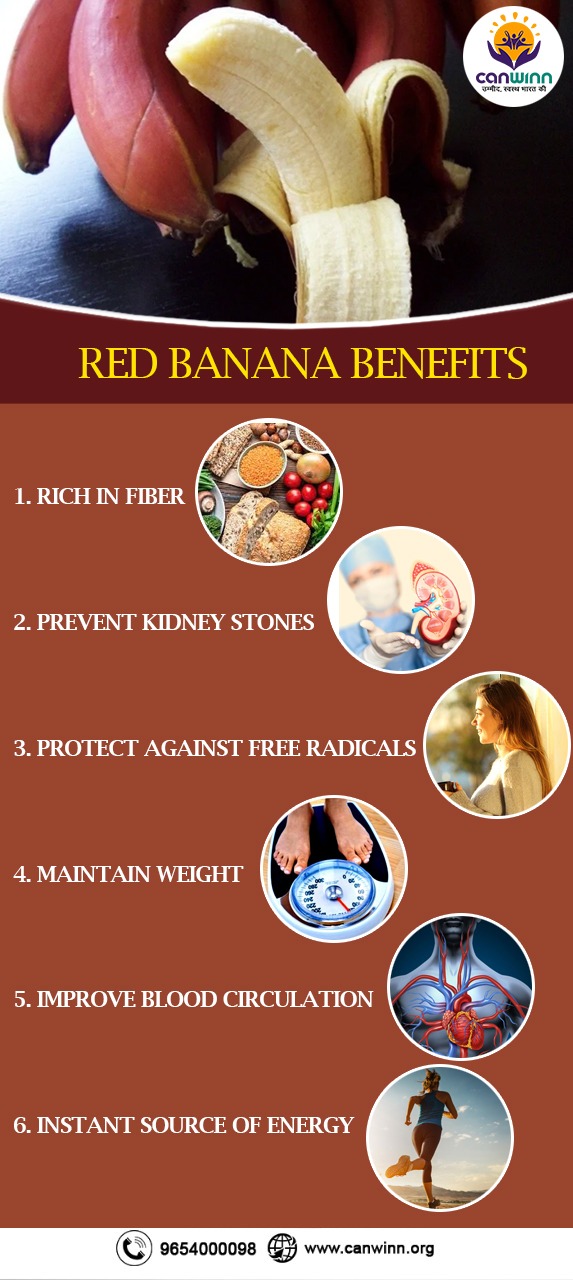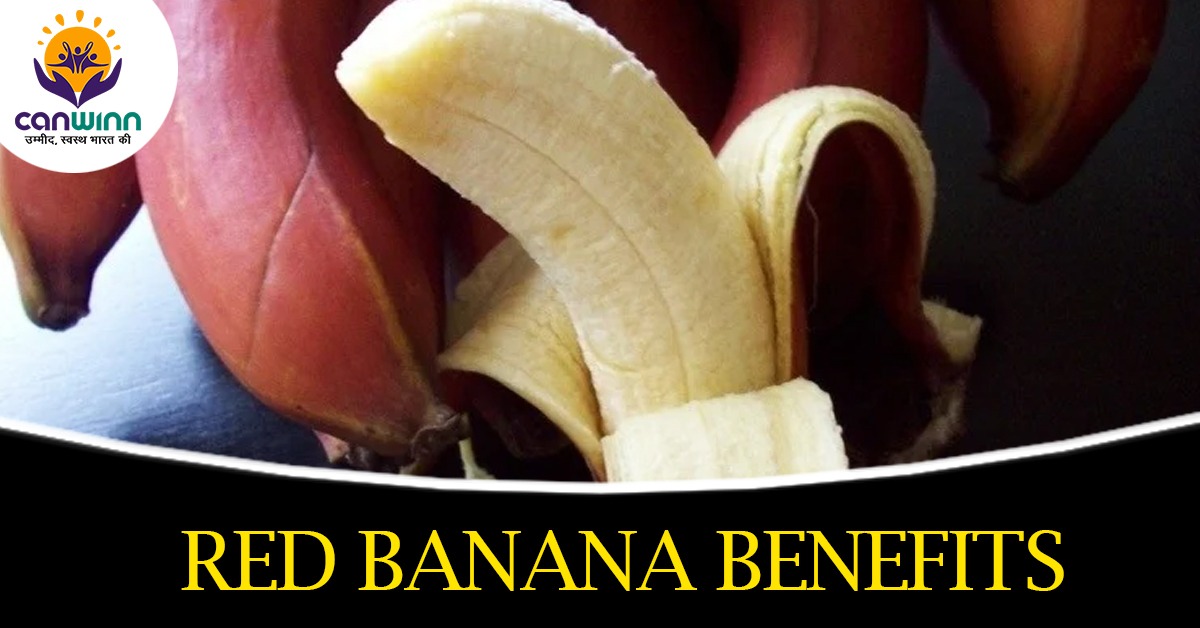Across the world, over one thousand different kinds of bananas exist that are not commonly known for everyone. Here, we are picking one variety to banana to discuss that is Red Banana that is also known as “Red Dacca”. This banana with red outer peel comes from the wild varieties of banana- Musa acuminata. The taste of the banana is similar to raspberries. In comparison to yellow bananas, red ones are shorter and sweeter and more nutrient-dense.
banana benefits include help lowering your blood glucose levels, boost immunity, promote heart health, and improve digestion.
Red banana benefits
The sugar it contains is sucrose, fructose, and glucose, and also red banana is loaded with beta carotene and vitamin C. Let’s see some of the health benefits of red banana:
1. Rich in Fiber
banana, commonly found in Southeast Asia, is rich in dietary fiber. Therefore, red banana help in problems like constipation, indigestion, and stomach problems. The dietary rich red banana maintains the bodyweight by making sure to reduce fat formation.
2. Prevent Kidney Stones
We know that potassium is essential for our body because a shortage of potassium can build up kidney stones. Therefore, red banana is a rich source of potassium that helps prevent conditions like kidney stones.
3. Protect against free radicals
bananas are a rich source of vitamin C that offers protection against free radicals. Similarly, this fruit stimulates the immune system and induces healthier metabolism.
4. Maintain Weight
Red banana contains no fat and thus, you can eat this to satisfy your hunger without getting worried about gaining weight.
5. Improve Blood Circulation
Banana help to promote blood circulation. So eventually, eating a red banana can decrease the risks of cardiovascular diseases such as heart attack and stroke.
6. Instant Source Of Energy
This variety of banana offers a great deal of energy. The carbs presented in Banana produces instant energy. Hence, you can have a red banana in your breakfast.
7. Avoid Heartburn
One of the banana benefits includes reducing the symptoms of heartburn. Its nutritional value is beneficial for a pregnant woman that commonly experience heartburn.
8. Plays a role in smoking cessation
banana nutrition accompanies vitamin C, B-6, potassium, and magnesium. All the substances are beneficial for the after-effects of smoking cessation. By providing such nutritional value, red banana recovers from nicotine withdrawal. In other words, this quality fruit combats the side effects of nicotine removal.
9. Good for your skin
banana comprises antioxidants and anti-inflammatory compounds that ultimately reduce skin aging and stimulates the production of collagen. Moreover, red banana is beneficial for the skin in the way that it helps avoid skin inflammation such as acne or eczema. You can eat a red banana as well as topically use it to provide various benefits to your skin.
10. Produce Strength Hair
Considered as a rich source of various nutrients, banana can benefit to reduce scalp issues and stimulate hair growth. You can use a banana mask directly on your hair and scalp to give them the nourishment.
Red bananas vs yellow bananas
Nutrient Profile: In contrast to yellow banana, banana contain more phenolic and beta-carotene. And yellow banana contains a high amount of glycemic index as compared to banana.
Size: Where yellow banana comes in long size, red banana is shorter than the yellow ones.
Color: Commonly known, yellow bananas come with yellow peels and white flesh. On the other hand, the red banana comes in red to purple peel and creamy pinkish flesh.
Taste: Almost both of the varieties of banana taste similar. But banana has a touch of raspberries taste.
| Nutrition Facts | ||
| Amounts are per 100g (3.5 Oz) serving | ||
| Nutrient | Red Banana (Red Dacca) |
Yellow Banana (Cavendish) |
| Calories | 90 | 89 |
| Sugar | 19.50 g | 17.87 g |
| Starch | 58.13 g | 57.31 g |
| Amylose (starch slow/resistant to digestion) | 10.18 g | 9.67 g |
| Amylopectin (starch that’s easily digested) | 47.95 g | 47.64 g |
| Amylose/amylopectin ratio | 0.23 | 0.20 |
| Glycemic Index (GI) Value | 44.95 | 45.49 |
| Total Phenol Content | 1.07 mg GAE/g | 0.94 mg GAE/g |
| DPPH (measurement of antioxidant activity) | 18.09 mg/mL | 21.84 mg/mL |
| Vitamin C (ascorbic acid) | 8.2 mg estimate | 8.7 mg |
| Vitamin A (?-carotene equivalents) | 367 | 134 |
| Lutein | 80 µg | 42 µg |
For more healthy tips, stay in touch with Canwinn Foundation!



